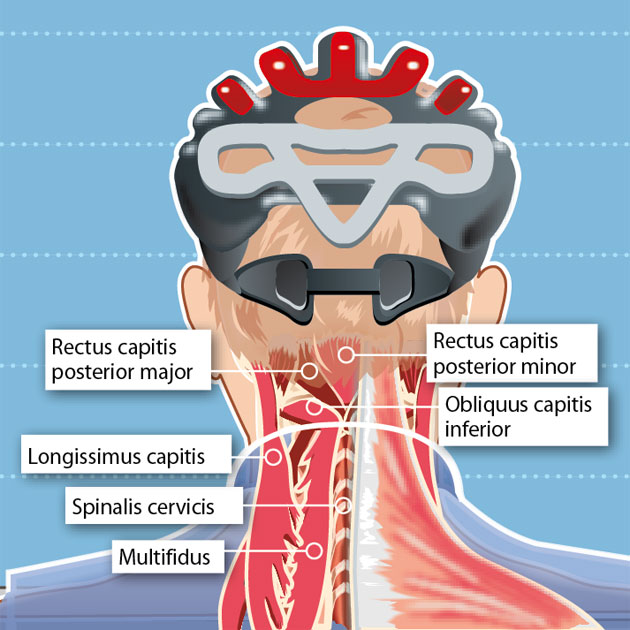What is it?
Neck and back pain are common in cyclists, occurring in up to 60% of riders. It is. caused by bearing too much weight through the upper limbs. This results in the neck to receive too much pressure – ideally only 40% of weight should be transmitted through the upper limbs. Also, the position in the neck in the cycling position calls for good neck strength, the head position of a cyclist is forward of the shoulders which is not the optimal for neck muscles. The need for muscular activity is increased and the stress imposed on the cervical tissues is increased.
What does it feel like?
The cyclist will present complaining of neck pain arising when on the bike. The pain is usually a dull ache at the base of the skull, aching in the trapezius muscles, twinging in the neck with turning neck or looking up, neck pain with headaches, or tightness between shoulder blades and trapezius muscles.
What causes Cyclists neck?
A cycling position is the cause of cyclist’s neck, some examples of the positions that will result in pain are below:
- Saddle tipped for forcing more WB through upper limbs.
- Reach is too long or handlebars too low.
- Stiff upper thoracic spine or rounded upper spine causing cervical spine to hyper-extend to see ahead.
- Elbows in full extension, hence not softening the impact up to the neck region.
- Poor adjustment of a helmet – if the helmet is too low in front, the rider has to extend head upward to keep the helmet from blocking the view forward.
- High pressure in tyres causing less absorption of terrain bumps
- Poorly fitted eyeglasses eg glasses sliding down nose causing extension of cervical upper spine to be able to be looking through, not over, the glasses.
- Poor adjustment of a helmet – if the helmet is too low in front, the rider is forced to extend head upward to keep the helmet from blocking the view forward.
The extended position of the neck can cause the deep neck extensors to become fatigued if insufficient to support head weight during length of cycle. The trapezius muscle and other neck muscles, over time, can develop also stiffness and pain.
How is Cyclists neck diagnosed?
In order to diagnose cyclist’s neck, we ensure that we complete a full spinal assessment here at back in action. This will include an assessment of joint mobility, muscular length and strength, muscular tension, posture, neurological integrity and tension testing. We will also be performing a personalised and holistic subjective assessment on your cycling position.
How can Back in Action Physiotherapy help?
Once diagnosed our treatment methods will include:
- Mobilisation of the stiff joints using Maitland techniques.
- Soft tissue release of tight fascia and musculature.
- Strengthening and stretching exercises to resolve the weak and tight muscles.
- core engagement work and to provide as much information on ensuring a good cycling posture.

